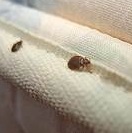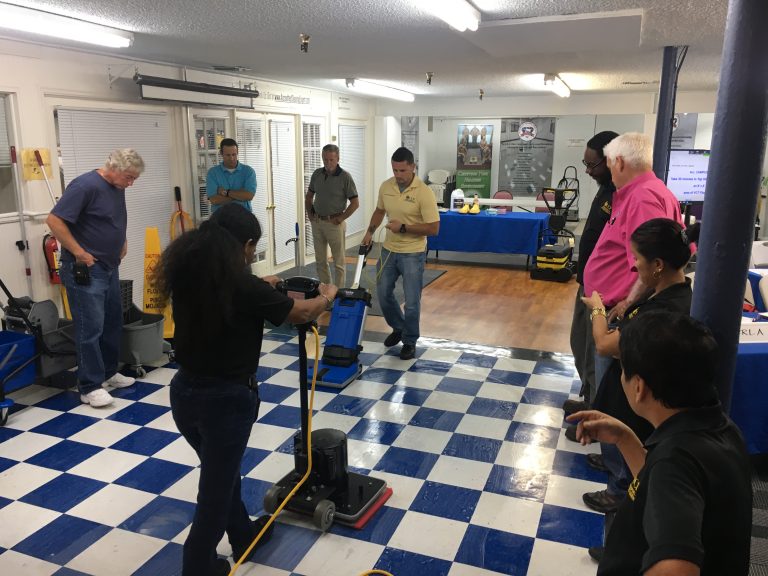Return of the Bed Bugs!!! by Rob Cloyd, Gem Supply Company
Return of the Bed Bugs
Bed Bugs (called such because they are commonly found in the bed or bed room area) a parasitic insect that feeds exclusively on blood like little Vampires, were mostly eradicated in the developed world in the early 1940s have increased in numbers since 1995. With the change in available use pesticides, Bed Bugs are now harder than ever to control, let alone eradicate. What was once a pest problem under control in the U.S. is now back as an epidemic.
A number of adverse health effects can result from bed bug bites, including skin rashes, psychological effects, and allergic symptoms. Bed Bugs feed on humans only when other sources of prey are unavailable. They are attracted to their hosts primarily by carbon dioxide, and secondarily by warmth. Bites are not usually noticed at the time of attack, they develop slowly to itchy welts that can take weeks to go away. Bed Bugs prefer exposed skin of a sleeping individual with the neck, jaw line and arms being easy target places to feed.
There are six different stages to the Bed Bug life, (five immature nymph stages and a final mature adult stage).They shed their skins through each stage which is called molting, leaving behind their clear outer shells (called an exoskeleton). Bed bugs molt six times before becoming reproducing adults and need a blood meal to complete each molt. Each stage lasts approximately a week, depending on temperature and the availability of food, and the complete life cycle can be completed in as little as two months. Females can lay between 200 and 500 eggs in their life span. Adult Bed Bugs will try to feed every five to ten days, but can live as long as a year without feeding if the conditions are right and normally can survive for four to five months without food. Younger instar Bed Bugs cannot survive as long, and newly hatched first instar Bed Bugs can survive for weeks without taking a blood meal.
A Bed Bug infestation is not necessary a sign of poor sanitation or cleaning practices and are spread by the activity of people on the move. They can and do hitch rides in boxes, suit cases, backpacks and on our clothing.
The first step to attacking a Bed Bug infestation is a thorough inspection.

 To be successful in ridding the problem, you must identify the problem and the area of infestation. So it is paramount to know how to identify bed bugs. Adults can easily be seen with the naked eye. Adult bed bugs are reddish brown in color, wingless, and are about the size of an apple seed. Immature bed bugs can also be seen with the naked eye although smaller than adults, and translucent whitish-yellow in color. The most difficult life stage to see is the first instar nymph. This is the youngest life stage that hatches out of the egg. These nymphs are so small that they are difficult to see unless they are moving or have recently fed (bright red when full of blood). Bed bug eggs are also tiny, about the size of the head of a pin. The eggs are pearl/white in color.
To be successful in ridding the problem, you must identify the problem and the area of infestation. So it is paramount to know how to identify bed bugs. Adults can easily be seen with the naked eye. Adult bed bugs are reddish brown in color, wingless, and are about the size of an apple seed. Immature bed bugs can also be seen with the naked eye although smaller than adults, and translucent whitish-yellow in color. The most difficult life stage to see is the first instar nymph. This is the youngest life stage that hatches out of the egg. These nymphs are so small that they are difficult to see unless they are moving or have recently fed (bright red when full of blood). Bed bug eggs are also tiny, about the size of the head of a pin. The eggs are pearl/white in color.
You will need a few simple tools to complete your inspection, first of all a strong flashlight is a must; other tools could include a screw driver set, wrench set or pliers, and a hammer. Some furniture disassembly may be required.
Start the inspection by carefully removing all bed linens and them removing the mattress standing it up to inspect each tuff and pleat, doing the same with the Box Springs. Next inspect the bed frame by disassembling as much as possible, checking every point of connection, cracks and hiding places, and then the headboard in the same manner. This area is where you are most likely to find evidence and activity. Next you will need to inspect the night stands, dressers and chests, removing all stored items including the drawers. Inspect all points inside and out. Then move to the chairs, couches and any other furniture items.
Bed bugs are elusive and usually nocturnal (peak activity usually occurs between 10:00 p.m. – 6:00 a.m.), which can make their detection difficult. They often hide in cracks and crevices, laying eggs by the hundreds in fabric seams. Signs to look for, include fecal spots (small dark sand-like droppings that occur in patches around and especially in nesting areas), blood smears on sheets and bedding, the presence molted exoskeletons and the little Brownish – Reddish insect itself. Although bed bugs can be found one at a time, they tend to congregate when the infestation increases. When done feeding a bed bug will relocate to a place close to a host, commonly in or near beds or couches in clusters which called a harborage area, ready to return for future feedings. These places can vary greatly and include bedding and bed area, luggage, furniture, electrical sockets, electronics, baseboards, picture frames and the list can go on and on. You must look everywhere in the room.
Eradication of bed bugs frequently requires a combination of pesticide and non-pesticide approaches. Pesticides must be applied according to the label and be labeled for the use against Bed Bugs. Non-pesticide approaches also known as Mechanical approaches, such as Vacuuming, Freeze Treatment, Steam Treatment, Heat Treatment, Mattresses Wrapping and Laundering, can aid in the control of Bed Bugs. All of that said, completely controlling a Bed Bug infestation can take a number of full treatments using both pesticide and mechanical approaches.
The treatment methods for Bed Bugs include:
- Pesticide Application, with an approved labeled pesticide, following the label directions; crack and clevis treatment and or dusting of all voids, furniture and contents in the area where harborage can occur.
- Fumigation, Fumigation is the most labor intensive and the most expensive although the most effective. Requires a Fumigation Specialist. Items such as plants, open food and perishables, medicine, some special metals, pets, etc. must be removed before treatment begins. Fumigation of specific items can also be done in a container, such as a fumigation trailer.
- Heat Treatment, to bring the area up to ranges above 140 degrees. This method has some risks of fire, and can break down the properties of some glues and resins. Heat may not always penetrate all areas of furniture. Items such as electronics, plants, medicine, CDs/DVDs, perishables, art, pets, etc. must be removed before treatment begins.
- Freeze Treatment, Freezing with carbon dioxide snow (dry ice) is a safe and non-toxic method that penetrates deep into cracks and crevices killing bed bugs, eggs and larvae. Freezing is completely dry and can be used on furnishings, electronics, art, etc. You should disassemble the furniture as much as possible.
- Steam Treatment, Steam is of course heated water which can be very effective if applied correctly, focus on the carpet, seams of bed mattresses and box springs, drapes along with other furniture. You should disassemble the furniture as much as possible.
- Vacuuming, Vacuuming can be very effective; because you can remove what you can see, but keep in mind that vacuuming alone will not solve the problem. Vacuuming to include; the carpets, drapes, every piece of the furniture at all points of fabric, cracks and joints. You should disassemble the furniture as much as possible.
- Mattresses Wrapping, Covering the Box Springs and Mattress with a Bed Bug Cover, the better covers will have a zipper that can be locked and secured. Any bugs missed or hiding will be contained to die and new activity can not penetrate.
- Laundering, Place all bed linings and clothing from the infested area into a plastic bag and tie it shut, take them directly to the washer, they must be washed in Hot Water and Dried on the highest setting.
So get that Vacuum and Steamer out and don’t give up, and remember to discard the Vacuum bag after each use.
And by the way, boric acid is not effective against bed bugs, because bed bugs do not groom themselves as other insects do.
Rob Cloyd – Twelve Years’ Experience as a Pest Control Operator and Gem Supply’s Director of Business Development/Customer Service.
![]()

